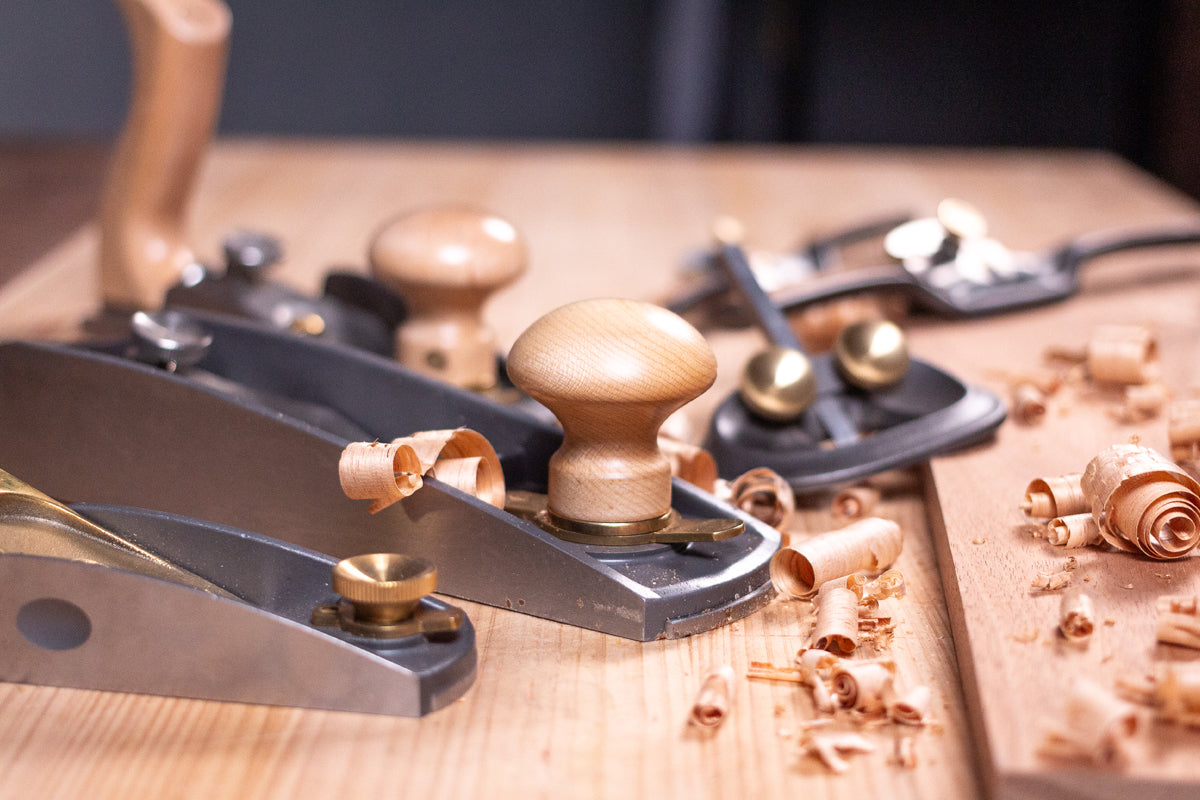Randy Maxey reviews a set of tools from a new brand.
Woodworking Crafts
When I learned about a new hand tool manufacturer, Melbourne Tool Company, I had to find out more about them. As it turns out, the company was started by Timbecon (timbecon.com.au), a major online retailer of woodworking tools in Australia. Melbourne Tool Company manufactures a wide range of bench planes and other hand tools.
Looking at the photos of their hand planes, I was intrigued by the apparent attention to detail and quality of machining. But photos can be deceiving. I needed to get them in hand and try them for myself.
We ordered a kit of hand planes that includes a block plane, smoothing plane and jack plane – all low-angle planes. Each plane is also available individually, of course. We also requested an additional pair of irons at different bevel angles for each plane.
The planes are manufactured in Asia but they are designed and engineered in Australia.
A geometry lesson
Being low-angle planes, the irons are oriented with the bevel up, unlike traditional bevel-down bench planes. The bed of the plane is machined at a shallow 12° angle.
The planes ship with irons ground at a 25° bevel. This bevel angle, combined with the 12° bed angle, places the cutting edge at 37°. The beds (or frogs) of a standard bench plane sit roughly at 45° at the cutting edge. This low angle of attack is great for slicing across end grain and tackling tough domestic and exotic hardwoods, especially those with wild grain patterns.
Available as an additional accessory, a 38° bevel iron creates a combined angle of attack at 50°, more in line with bevel-down bench planes. Consider this the all-purpose iron that handles a variety of planing tasks.
For those woods with wild, gnarly grain patterns that tear out when you try to plane them smooth, consider an iron ground at 50°. This high angle of attack (62°) essentially converts a low-angle plane to more of a scraping plane, able to tackle the worst grain.
With a choice of three bevel angles and just a swap of the iron, you have three hand planes instead of one. This proves to be good value and one big advantage of low-angle planes.
Steel yourself
Melbourne Tool Company manufactures their plane irons from M2 high-speed steel. Able to hold an edge longer than the popular O1 steel, its fine grain structure means a sharper edge than might be possible with other tool steels. I didn’t notice much of a difference putting a sharp edge on these M2 irons versus the O1 irons in my other planes. M2 tool steel offers a couple of other advantages: it’s tougher and more wear-resistant than O1 steel. What does this mean? When planing for several minutes, the cutting edge of the iron heats up due to the friction across the wood. If you’ve ever used a card scraper for any length of time, you know that the steel can get unbearably hot. M2 steel stands up to the heat.
The true test
What about the overall quality and how do these planes perform? Each plane ships in a cardboard box with a custom-fit foam liner to prevent damage. A nice touch. Rust-resistant paper wraps around the body. I didn’t see any rust on any of the planes. I also did not see a heavy coat of oil or grease on the steel, like you might find when opening other tools. The light film of protectant wiped off easily with a rag dampened with solvent.
Each of the three planes – block, smoother and jack – feature a cam-style mouth adjustment mechanism reminiscent of vintage Stanley planes. I’ve never been a fan of these. They seem clunky and many are poorly manufactured, making them difficult to operate. On the Melbourne planes, however, these mechanisms operate smoothly. But to be honest, I generally set the mouth opening very narrow and rarely need to change it.
All the planes are surprisingly heavy with thick castings. And this is a good thing. The added mass helps to carry the plane through the stroke, making planing tasks a little easier.
Build & performance
The planes also share Norris-style adjusters for blade depth and lateral position to keep the cutting edge parallel with the sole. All mechanisms operated smoothly with little backlash when adjusting the blade depth.
Checking all the planes for squareness between the sides and the soles, I found no issues. As a matter of fact, I was genuinely impressed and surprised by the quality of machining. This means that the planes can be used on their sides as shooting planes, if needed. I also checked the soles for flatness using a straightedge and discovered they were all dead flat. Another nice discovery.
The block plane, patterned after a Stanley 60½, fits the hand nicely and comfortably. The side indentations provide a comfortable resting spot for the thumb. There were no sharp edges in the lever cap or casting to cause discomfort. The smoothing and jack planes share the same quality of machining. Some may not care for the use of light wood for the tote and knob, but I think it's a refreshing change and rather like the look. All totes and knobs were smooth and well-finished for comfort in the hand.
With these bench planes, I quickly came to appreciate their heft while planing. Pushing through the cut seemed to take less effort than some of my lighter planes. It’s hard to explain, but when you’re using one of these hand planes, you can sense that you’re holding a quality tool. After using them for a short time, these planes are going to see much more use in my shop.

